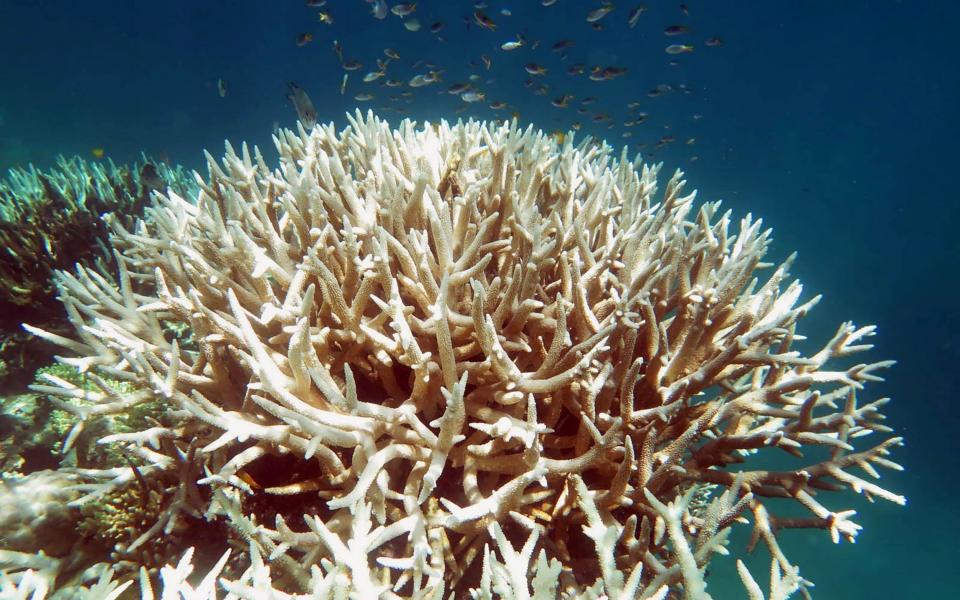'Horrific' Great Barrier Reef damage as scientists record first back-to-back years of serious coral bleaching

Scientists in Australia have discovered “horrific” coral bleaching across the Great Barrier Reef, including a 900-mile stretch that has been damaged for consecutive years and will struggle to recover.
Aerial surveys of the famous 1,500-mile stretch of reefs found that about two-thirds had suffered serious bleaching due to record-breaking water temperatures. It is the first time that scientists have observed consecutive years of serious bleaching events.
James Kerry, a marine biologist, said he was “horrified” by the findings, saying the coral could potentially survive but it will take ten years for even the fastest growing corals to recover.
“Mass bleaching events twelve months apart offers zero prospect of recovery for reefs that were damaged in 2016," said Dr Kerry, from James Cook University.
“This is the fourth time the Great Barrier Reef has bleached severely – in 1998, 2002, 2016, and now in 2017. Bleached corals are not necessarily dead corals, but in the severe central region we anticipate high levels of coral loss.”
The survey, involving eight flights at low altitudes, covered 5,000 miles and found that the worst of the bleaching was in the middle third and that only the bottom third was unscathed. Underwater examinations have also been conducted.
Professor Terry Hughes, from James Cook University, said the bleaching was sadly “conspicuous” both from the air and underwater. He said a tropical cyclone which struck parts of the reef in recent weeks – bringing flooding and strong winds to the region - was likely to add to the damage.
“Clearly the reef is struggling with multiple impacts,” he said. “The bleaching is caused by record-breaking temperatures driven by global warming.
"This year, 2017, we are seeing mass bleaching, even without the assistance of El Niño conditions… as temperatures continue to rise the corals will experience more and more of these events.”

Scientists and environmentalists have called for urgent measures to protect the Great Barrier Reef, including reducing developments of ports and minerals export hubs along the coast of the state of Queensland.
In recent years, Unesco has threatened to put the reef on its in danger list because of the widespread damage. The famous marine reserve is often considered one of the seven wonders of the natural world.
Russell Reichelt, from the Great Barrier Reef Marine Park Authority, said some sections of coral remained largely unaffected and that the healthy reefs would help to “seed recovery”.
“Reefs and individual coral colonies do have the ability to recover, depending on the severity of the bleaching and whether other pressures are reduced," he said.

The world's nations agreed in Paris in 2015 to limit average warming to two degrees Celsius (3.6 degrees Fahrenheit) over pre-industrial levels, by curbing fossil fuel burning.
Canberra in 2015 narrowly avoided UNESCO putting the reef on its endangered list, and has committed more than AUD$2.0 billion (£1.2 billion) to protect it over the next decade.

